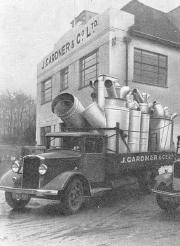Building services grow in sophistication and importance — The second 25 years (1930 to 1954)
Despite the economic difficulties of the 1930s and 1940s, building services grew in importance — and air conditioning was installed in a number of prestige buildings. Education and training needs received serious attention.The second 25 years of HVCA’s history saw building services grow in importance and significance. More and more boilers were oil fired, moving on from coal. Air conditioning The use of mechanical ventilation grew, and air conditioning began to establish itself — first in industry and then to improve comfort in commercial buildings. Prestige cinemas and theatres were among the first buildings to have air conditioning installed, as well as restaurants and public rooms in luxury hotels, but very few offices installed air conditioning. Demarcation disputes between heating fitters and plumbers worsened, largely because of the deteriorating economic situation. The National Association of Heating, Ventilating & Domestic Engineering Employees tried to resolve the dispute. A ballot on merging the fitters’ and plumbers’ unions in 1934 resulted in the plumbers’ union voting strongly in favour — but the fitters’ union voted against. The Second World War impacted directly on the association, with an air raid closing its offices in Russell Square in London in September 1940. Temporary accommodation was found in the offices of the Federation of British Industry in Tothill Street and then in Millbank House on the Embankment. until 1949, when it moved to 58 Victoria Street. The war also impacted on the association’s membership. The factories and workshops of some companies produced munitions, machine tools, bridges, radar towers and fire pumps. Other companies provided services for factories, military operations and defence requirements. Industry expertise was also applied to improving ventilation on ships used for carrying troops. Air conditioning received a significant boost as it was installed in underground operations rooms and defence works. Fuel shortages saw oil-fired boilers converted to burn creosote pitch. Peace-time Efforts to return to peace-time output in the immediate post-war period were hampered by shortages of materials and Government controls. Fuel shortages pushed energy efficiency into the limelight.
Mechanical ventilation and air conditioning grew in importance during the second 25 years of the HVCA’s history. This advertisement of
J. Gardner & Co. dates from 1938.







